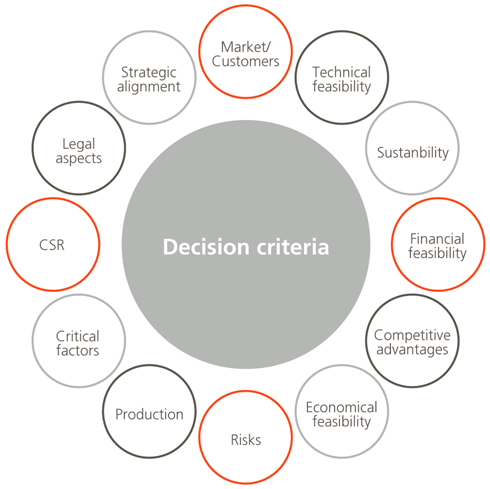 Abengoa
Abengoa
Annual Report 2011
- Activities
- Abengoa and Innovation
- Innovation management
Valuating R&D work, as an integral part of the many activities geared towards innovation management at Abengoa, its ultimate aim of this process is to help attain Abengoa’s strategic objectives, while simultaneously minimizing the risks associated with investments in R&D&I projects.
In 2010, Abengoa took its first step towards rolling out its R&D assessment system by designing a process to quantify, in economic terms, the company’s innovation “assets”. This process allows the company to track investment in R&D from its origin to its actual implementation within a commercial process, measuring the improvements made by the research, in terms of profitability and efficiency, to the processes associated with technological innovation. The intangible nature of innovation can therefore be singled out and incorporated into the value generated by Abengoa.
Over the course of 2011, R&D was evaluated throughout the entire company. This common approach was used to assess the different programs of all lines of business, thus allowing Abengoa to obtain homogenous and therefore comparable results. The process has therefore provided the company with useful data with which to improve the quality of its strategic decisions relating to R&D&I investment, including qualitative and quantitative aspects, and allowing the company to weigh up all the different factors that should be taken into account when reaching a final decision.

Criteria incorporated into the R&D evaluation process
The R&D valuation process follows the sequence described below:
- Description of the programs with a certain degree of detail and of their objectives and budgets. This requires us to align the program with the target market of our strategic objectives and subsequently allows us to compare the different programs.
- Qualitative valuation, studying how each R&D program fits in with Abengoa objectives, based on the criteria previously flagged as key to its strategy.
- Quantitative valuation, enabling us to estimate the value of the programs, including any uncertainties, and to identify any possible risk of the desired value not materializing. To such end, Abengoa prepares and studies technological and demand-related scenarios under different degrees of probability, which are then combined with the inputs associated with each program. The process is then repeated to obtain an average expected value of the portfolio of each R&D program with an associated risk.
- Lastly, the results are compered together to provide an overall picture of the portfolio, comparing its strategic suitability and maturity with its economic value.
The process is essentially intended to add valuable information on issues that are essential to R&D&I management, on our R&D&I strategy, on the suitability of our programs to this strategy, on the alignment of projects to programs, on risk diversification, etc. It also allows us to forge solid links between the projects/programs and the viability of different lines of business, with associated costs and returns considered globally.
The ultimate aim is therefore to identify the impact of R&D on Abengoa’s current results and on its short-, medium- and long-term projected results.

© 2011 Abengoa. All rights reserved
